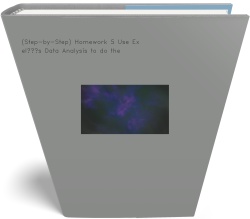HUBBARD BREWING CO. (HBC) Jack Meister, the master brewer at Hubbard Brewing Co. (HBC), would like to
HUBBARD BREWING CO. (HBC)
Jack Meister, the master brewer at Hubbard Brewing Co. (HBC), would like to predict the annual sales of beers that are brewed at HBC. To this end, he has assembled data and run a multiple linear regression model of beer sales based on the following five factors:
- Hops: The ounces of hops used in the brewing of a keg of beer.
- Malt: The pounds of malt used in the brewing of a keg of beer.
- Annual Advertising: The annual advertising expenditures for the beer in dollars.
- Bitterness: The bitterness rating of the beer. Bitterness is rated on a scale of 1 to 10 with 10 being the most bitter.
- Initial Investment: The initial investment in brewing equipment in $ million.
Jack gathered data on these five factors for 50 different beer brands brewed by HBC. This data shown is in spreadsheet HBC.xls.
Jack then ran a regression model to predict the annual sales of beers (in $1,000) using the previous five factors as the independent variables. Table 6.35 shows the key ingredients of the regression output from Jack’s model. Table 6.36 shows the sample correlations for the data for the five independent variables.
Table 6.35
| Regression Statistics | |
| Multiple R | 0.93754083 |
| R Square | 0.87898281 |
| Adjusted R Square | 0.86523085 |
| Standard Error | 558.936373 |
| Observations | 50 |
| Coefficients | Standard Error | |
| Intercept | -13707.139 | 1368.408637 |
| Hops (ounces per keg) | 37.3443987 | 42.49702237 |
| Malt (pounds per keg) | 1319.26959 | 161.0761968 |
| Annual Advertising($) | 0.04931422 | 0.004832117 |
| Bitterness Scale | -63.16776 | 83.10859298 |
| Initial Investment($ million) | 53.230469 | 133.1422872 |
Table 6.36
| Hops | Malt | Annual Advertising | Bitterness | Initial Investment | |
| Hops | 1 | ||||
| Malt | -0.0508 | 1 | |||
| Annual Advertising | -0.0467 | 0.2194 | 1 | ||
| Bitterness | 0.6744 | -0.5468 | -0.1554 | 1 | |
| Initial Investment | -0.0335 | 0.0173 | 0.0812 | 0.0319 | 1 |
Table 6.37
| Proposed New Beer | Hops (ounces per keg) | Malt (pounds per keg) | Annual Advertising | Bitterness Scale | Initial Investment ($ million) |
| "Great Ale" | 12.0 | 8.0 | $150,000 | 6 | 1.2 |
| "Fine Brau" | 7.0 | 6.0 | $155,000 | 2 | 1.3 |
| "HBC Porter" | 11.0 | 8.0 | $180,000 | 3 | 2.1 |
| "HBC Stout" | 9.0 | 7.0 | $150,000 | 6 | 1.0 |
- What is the regression equation produced by Jack’s regression model?
- Compute a 95% confidence interval for each of the regression coefficients in Jack’s model. Do you notice anything interesting?
- Evaluate the validity of Jack’s regression model. In particular, which regression coefficients are significant? How might Jack change the model to arrive at a more valid model?
- Construct a new regression model that will still have good predictive power, but whose regression coefficients will be more significant. What is the new regression equation?
- Table 6.37 contains data for four proposed new beers being developed for possible production at HBC. What is your prediction of the annual sales of these four new beers based on your new regression model?
- HBC’s new product development team has created a new beer, temporarily called Final Excalibur, that they believe will be the most biter beer ever sold. The ingredients consist of 13 ounces of hops and 7 pounds of malt per keg. HBC is thinking of investing $700,000 in initial capital to brew this beet with an annual advertising budget of $150,000. Would you recommend using the regression equation to predict the sales of this new beer? Why or why not?
Deliverable: Word Document


![[Solution Library] DECISION ANALYSIS The dealership in problem [Solution Library] DECISION ANALYSIS The dealership in](/images/solutions/MC-solution-library-80752.jpg)



![[Solution] The manager of an ice cream parlor located in a small [Solution] The manager of an ice cream](/images/solutions/MC-solution-library-80756.jpg)
